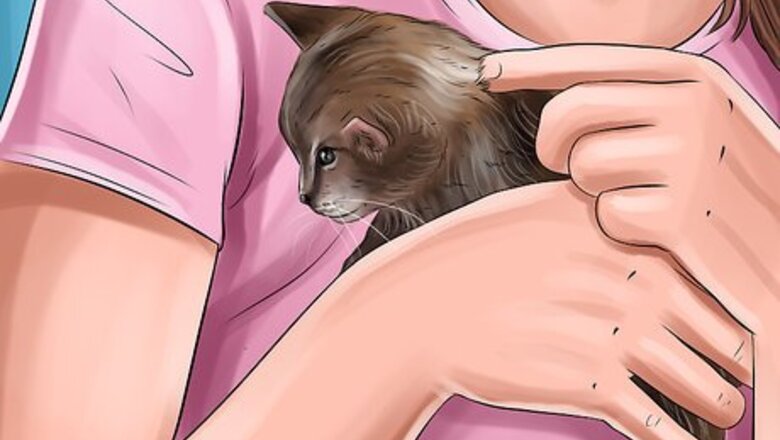
views
Picking Up a Kitten
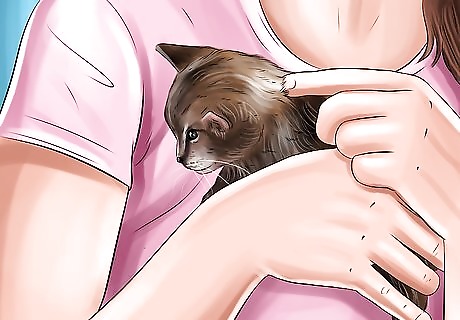
Be gentle and patient when picking up the kitten. Kittens are very small and fragile, so make sure you're using a very light touch and gentle care. If the kitten shows signs that it doesn’t want to be touched, like avoiding your touch or running from your hand, leave it alone and try again at a later time. Watch out for the mother cat, who may not want anyone handling her kittens. She may bite or scratch people to prevent them from touching the kittens. Children under the age of 5 shouldn’t handle kittens as they can be unknowingly rough with the kittens.

Approach the kitten from the side. This will help you avoid scaring the kitten as it is resting or playing. Make sure it sees you coming and is okay with being touched or held. If it’s an emergency, you might have to approach quickly to touch the cat, but be careful not to frighten it. Talk to the cat in a calm and quiet voice as you approach it, which will let the kitten know that you are there.
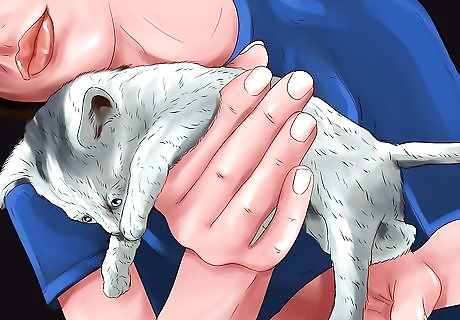
Place your dominant hand palm-up below the kitten. Your hand will provide the support for the kitten. As you place your hand under it, let it get used to you and smell your hand. Never pick up a kitten from its scruff. This can cause issues with the kitten’s neck and damage their hind legs because it is not secure.
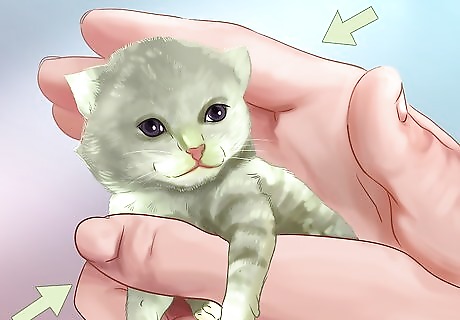
Secure the kitten by curling your fingers around their body. Keep your grip soft but firm so that you won't drop it. You should curl your hand so that four fingers wrap around its chest and your thumb completes the circle from the other side.
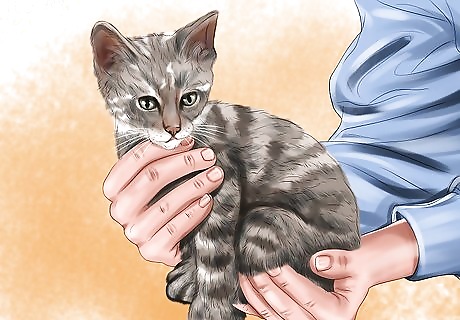
Use your other hand to secure its hind legs. This hand should also be palm-up and securely under the kitten’s belly. You might find it helpful to cup the kitten's hind legs so it isn't dangling in the air as you lift it. Using both hands will help the kitten to feel secure and keep it from trying to escape your hands as you hold it.

Hold the kitten to your chest. Bring the kitten up to your chest slowly and allow it to rest there for a moment. You can place the kitten on your skin or just hold it near your chest. This gives you extra control and allows the kitten to get used to your scent and the feeling of being held. As it’s resting against your chest, you can pet its back or head with one of your fingers, or just let it get used to your presence. The heat from your body can also help the kitten to feel more relaxed as you hold it.
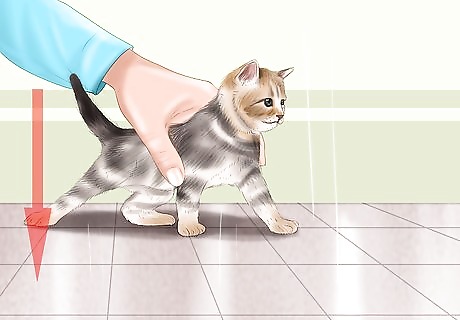
Put the kitten down when it begins to squirm or resist being touched. Kittens are usually very vocal when they don’t want to be handled. Squirming, crying meows and scratching are all signs that the kitten wants to be put down. Gently move your hands to the floor and release the kitten from your grasp to avoid dropping it. Remember that kittens have sharp claws and will naturally scratch if they feel threatened.
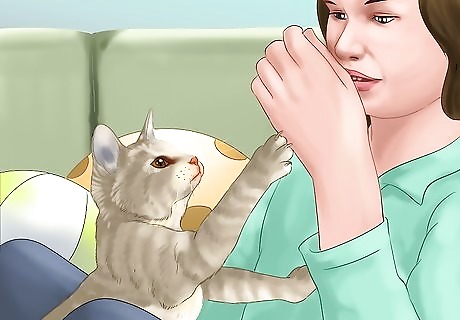
Try sitting down to pick up the kitten if it’s squirming. Sitting down will allow you to be closer to where the kitten is and lessens the chance of you dropping a squirmy kitten. Sometimes, sitting down will encourage the kitten to come to you by crawling into your lap or onto your hands. Being at ground-level is a good way to get kittens used to your presence without seeming threatening or scary. Remember, you’re a lot bigger than the kitten is so it might be scared!
Socializing Your Kitten

Allow your kitten to explore its surroundings. When you first get your kitten, it can be tempting to never let it out of your sight. However, kittens are natural explorers, and the sooner you let it get used to its surroundings, the sooner it’ll feel comfortable in its new home. Keep an eye on it at first, especially if it's very small. Once you’re sure that there's nothing that could hurt or trap the kitten, you can let it explore alone. A great way to do this is by leaving doors open to new rooms after removing anything that could harm a tiny kitten. Letting the kitten explore its new surroundings on its own accord will lessen the stress of moving to a new home! Before letting a kitten loose in the room, make sure all wires are covered and taped away. Remove anything unhealthy from the room so the kitten doesn't accidentally chew on it. This could include toxic plants, strings, yarn, rubber bands, ribbon, electrical cords, cords from blinds, and small objects that could choke the kitten. You should also do your best to block or remove areas that could trap the kitten, such as gaps under or between furniture. Make sure there aren't any holes in the wall that the kitten could crawl into.
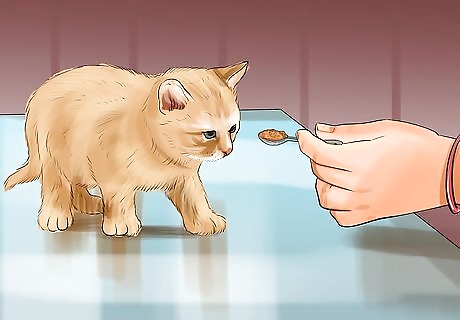
Socialize your kitten with food and treats. Be careful when touching a kitten while it eats, as it may be protective of its food, especially if there are other cats or kittens in the home. Start by gently touching its back while it eats to get it used to you being there. After a while, put some food in your hand or on a spoon and let it eat from there. This is especially useful for very shy kittens who haven’t had much experience around humans. You can also use baby food in turkey, chicken, or beef flavors on your finger to entice the kitten to interact with you during feeding time. You should only use a small amount, however, such as the amount that fits on your fingertip. Otherwise, you may be overfeeding the kitten or could upset its stomach.
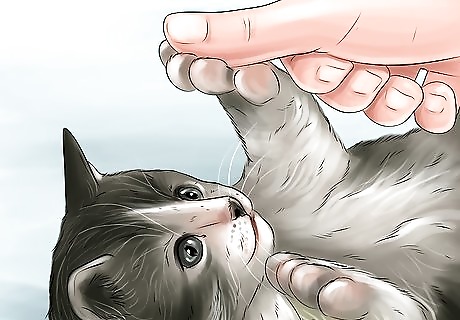
Play with the kitten every day using toys and treats. There are plenty of ways to bond with your cat and keep them entertained, but one of the most fun and entertaining ways is through play. Encouraging it to “chase” or “hunt” a cat toy or feather can show it that you’re not going to hurt or scare it. Avoid leaving the cat alone with toys that have long pieces of string, as they can get tangled in the string and suffocate. You can reward your kitten for playing nicely after a few minutes by giving it a small piece of food. Aim to play for about 15 minutes at a time each day, about 2-3 times per day, to avoid getting it too tired but still keeping it engaged.
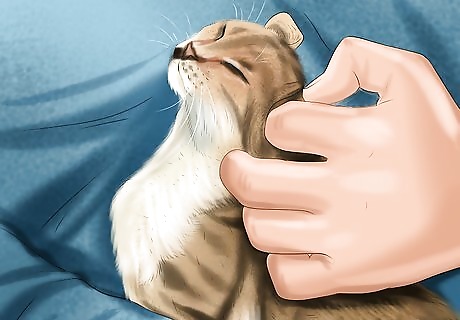
Pet your kitten’s head and back lightly as it is lying down. Using your pointer finger or the back of your hand, gently smooth the fur of the kitten along its head and back. This gets the kitten used to your touch and shows it that you’re gentle. Make sure to approach slowly and quietly so you don’t startle the kitten! If the kitten is sleeping, don’t disturb it! Only pet the kitten when it’s resting but still awake. This is especially useful for cats who might be skittish or frightened by humans because it gets the kitten used to your touch. Waiting until the kitten is resting allows you to approach it quietly and calmly.
Caring for Your Kitten
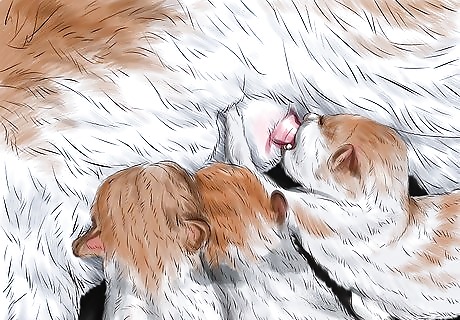
Allow newborn kittens to bond with their mother for at least 8 weeks. You should never separate a kitten from its mother and littermates before it is 8 weeks old because this time is crucial for the socialization of the kitten. It allows the mother to care for the kittens and teach them survival skills. Time with its mother is crucial for the kitten to learn how to be a cat. This includes learning how to curtail its hunter instinct when necessary to limit aggressive behavior. Kittens who are removed from their mothers before this age can exhibit aggression, litter training issues, and have trouble eating. If you find a kitten that has been orphaned by its mother, you can care for the orphan by feeding it with a bottle and keeping it warm, which can save its life.

Create a safe, warm area for your kitten to sleep and rest. Many people use boxes or small pet beds to give their kitten a place to relax and nap. Kittens need to be kept warm because they’re small, so include a small blanket, towel, or t-shirt and a hot water bottle for it to cuddle with. Try not to disturb your kitten when it’s sleeping because good sleep is important for its growth. If you want to pet your kitten while it’s lying down, be sure to check that it’s awake first! Make sure your kitten has plenty of time to rest at night and during the day!

Make sure your kitten always has access to food and water. Kittens are growing animals and need food and water to be healthy and happy. Have a small bowl of water on the ground for the kitten and refresh it with new water every day. Leave a bowl of food on the ground as well, and refill it as needed when it is empty. As your kitten grows up, you can move to feeding it only twice a day because it will need less food and only eat when it's hungry. Keep the food and water bowls in the same location to teach your kitten to eat and drink in those places only. Clean the bowls in warm, soapy water once a week. Make sure they are rinsed and dry before you refill them.
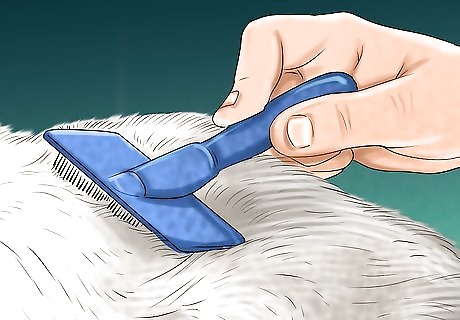
Groom your kitten regularly by using a brush. Grooming your kitten once per week while it's young will get it used to being touched and handled. Gently run a brush over its back and the top of its head while it is lying down or sitting. Each time you groom the kitten, let it smell and get used to the brush before you touch the brush to its fur.

Talk softly and quietly around kittens. When they are very young, kittens have sensitive ears and can be scared by loud noises and unexpected sounds. Try to whisper to other people or talking in a slow and soothing voice to your kittens. Always remain positive when talking to it, as a harsh tone can cause it to become anxious. After the kitten gets a little older, you can use a normal volume. You can get kittens used to noise by turning on a TV or radio to play softly in the background all day. If you leave home during the day, this can get your kitten used to regular noises and the sound of people talking.
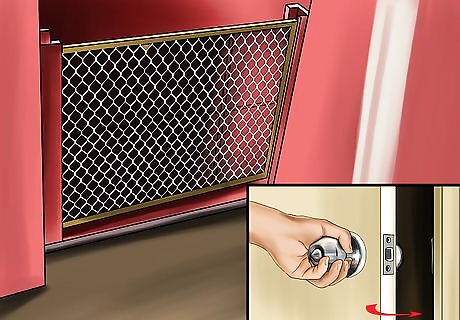
Cover potential hiding places under furniture or in tight spaces that could be dangerous. At first, your tiny kitten might want to run and hide in a place where it feels safe. Allow it to explore in rooms that have been kitten-proofed with nowhere to get stuck, trapped, or lost. As your kitten grows up, you can remove these barriers because there is less of a chance of it getting trapped! You can block off cracks under furniture using folded towels or t-shirts. It might also be helpful to put up barricades to keep your kitten in one room as it’s getting used to its new home.




















Comments
0 comment